What is tapioca? Discover its various types, unique properties, and many uses, from bubble tea to gluten-free recipes, and unlock the potential of this fascinating ingredient in your kitchen!
Tapioca, a refined product from cassava starch, has become a popular ingredient in kitchens worldwide.
The cassava plant, native to South America, is processed to extract starch, which is then further refined to create tapioca in various forms.
This refinement gives tapioca its unique texture and properties, making it a versatile choice in cooking.
Whether it’s tapioca pearls used in bubble tea for their chewy texture, tapioca starch for thickening sauces and soups, or tapioca flour for gluten-free baking, this ingredient plays an essential role in many dishes.
Tapioca’s journey from a humble yuca root to a global kitchen staple highlights its adaptability.
It has crossed cultural boundaries, showing up in everything from Brazilian tapioca pancakes to Filipino desserts.
With its diverse uses, tapioca continues to be a key ingredient in a variety of cuisines around the world.
Recommended: What is Tapioca Made from?
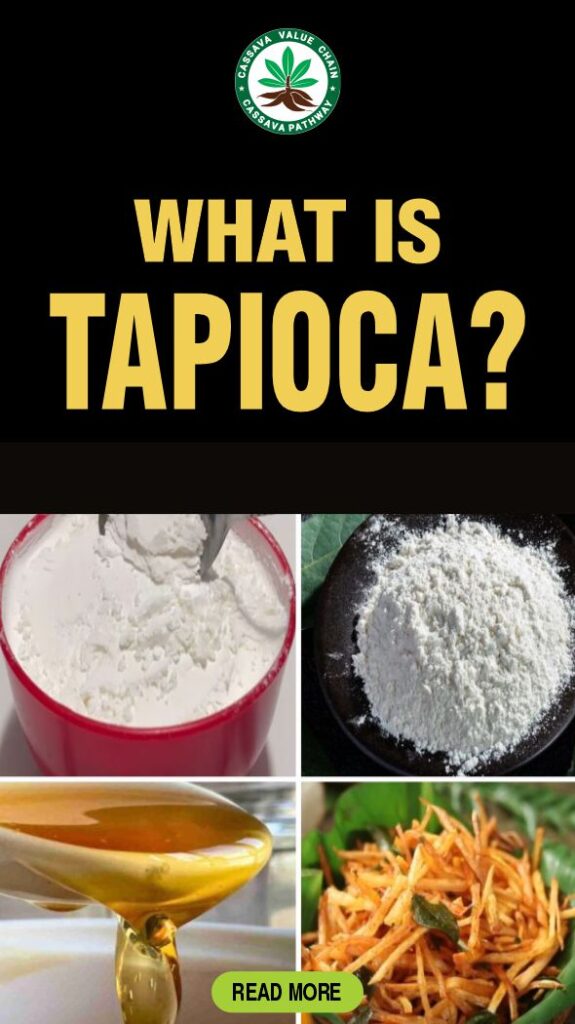
Main Points
- Tapioca is derived from cassava starch and is versatile in bubble tea, gluten-free baking, and soups. It includes pearls, starch, and flour, each with unique culinary uses.
- Tapioca originated in South America from cassava and spread globally by Portuguese explorers. It adapted in Africa and Asia, with regional variations like Brazilian pancakes and Taiwanese bubble tea.
- Tapioca, made from cassava starch, includes products like pearls, flour, and flakes. Each tapioca form undergoes refinement, altering its texture for various cooking applications.
- Naturally gluten- and grain-free, tapioca absorbs flavors, making it ideal for diverse dishes. High in carbs but low in other nutrients, it’s perfect for bubble tea and puddings.
- Tapioca pearls are used in bubble tea, starch thickens soups, flour is for gluten-free baking, chips are crispy snacks, and syrup is a mild sweetener in recipes.
Table of Contents
- Main Points
- What is Tapioca?
- History of Tapioca
- The Cassava-Tapioca Connection
- Tapioca in the Cassava Value Chain
- Properties of Tapioca
- Types of Tapioca
- Tapioca vs Other Ingredients
- Common Uses of Tapioca Around the World
- Commercial Uses of Tapioca
- Culinary Uses of Tapioca
- Health Benefits and Nutritional Profile of Tapioca
- Nutritional Profile of Tapioca
- Potential Health Concerns of Tapioca
- How Tapioca is Made
- Frequently Asked Questions
What is Tapioca?
Tapioca is an umbrella term that houses a variety of products made from cassava starch, a starch derived from the root of the cassava plant. It is essentially a refined version of cassava starch, further processed to create different forms such as tapioca pearls, starch, and flour.
These refined products retain the properties of cassava but offer different textures and uses, making tapioca important in a wide range of culinary applications.
History of Tapioca
Tapioca’s journey begins in South America, where indigenous people first cultivated cassava, extracting starch to create tapioca.
In the 16th century, Portuguese explorers introduced cassava to Africa and Asia, where it adapted to various climates and agricultural practices.
In Africa, it became a staple food, commonly eaten as fufu or flour, while in Southeast Asia, it transformed into dishes like bubble tea, gaining worldwide popularity.
Over time, regional variations emerged, with Brazil embracing tapioca in street food, serving crispy crepes with diverse fillings.
In Taiwan, tapioca pearls became famous as a key ingredient in bubble tea. Today, tapioca’s gluten-free nature has made it an essential ingredient in many cuisines.
From its historical roots to its modern resurgence, tapioca showcases how a simple plant has evolved across cultures, blending traditional uses with contemporary culinary trends and reflecting global culinary innovation.
Related: How to Make Tapioca Starch and Flour
The Cassava-Tapioca Connection

Tapioca is directly linked to cassava, as it is made from the starch extracted from cassava roots.
You can think of tapioca as a refined product that begins with cassava.
Cassava provides the raw starch, and through further processing, this starch becomes what you know as tapioca.
This means every tapioca product, whether it’s pearls, flour, flakes, or sticks, starts with cassava starch.
Tapioca doesn’t exist without cassava. The relationship is simple: cassava is the source, and tapioca is the outcome.
So when you use tapioca in cooking or baking, you’re using a part of cassava that’s been shaped into different forms.
Understanding this helps you see how closely the two are connected, both in origin and in use.
Related Posts
- Substitutes for Tapioca Starch
- Is Tapioca Gluten-free?
- Cassava and Tapioca: How Do they Differ?
- Tapioca Starch Industry Trends
- Tapioca Pudding vs Rice Pudding
- How to Make Boba Pearls without Tapioca Starch
- What is Instant Tapioca?
- Tapioca vs Crystal Boba
- Troubleshooting Tapioca Balls
Tapioca in the Cassava Value Chain
Tapioca is a key product in the cassava value chain, which is obtained from cassava starch, which is dried into tapioca flour, pearls, or flakes.
Tapioca adds value by transforming raw cassava into versatile food products used in baking, thickening sauces, and making desserts like bubble tea.
This value addition creates employment opportunities in processing, packaging, and distribution, supporting local economies.
Tapioca production also extends cassava’s shelf life and market reach, especially for export.
As a gluten-free, affordable carbohydrate source, tapioca strengthens food security and stimulates innovation in both traditional and modern food industries, making it a vital link in the cassava value chain.
Properties of Tapioca
Tapioca has become a kitchen favorite for many reasons, especially for those on gluten-free or grain-free diets.
Below, you’ll find a clear table that outlines its key properties, from taste and texture to shelf life and nutritional profile.
Gluten-Free & Grain-Free
Tapioca is naturally gluten-free and grain-free, making it an excellent choice for people with celiac disease, gluten sensitivities, or those following paleo and grain-free diets.
It serves as a versatile substitute for wheat-based thickeners and flours in cooking and baking.
Neutral Taste
One of tapioca’s greatest advantages is its neutral flavor. Unlike other starches that may have a distinct taste, tapioca easily absorbs the flavors of the ingredients it’s mixed with, making it perfect for sweet and savory dishes alike.
High in Carbohydrates
Tapioca is composed almost entirely of carbohydrates, making it a quick source of energy.
However, it lacks protein, fiber, and essential nutrients, meaning it should be balanced with other nutrient-rich ingredients in a diet.
Chewy & Elastic Texture
When cooked, tapioca develops a unique chewy and elastic texture, which is why it’s commonly used in bubble tea pearls, puddings, and gluten-free baked goods.
This elasticity also helps improve the structure of bread and other gluten-free doughs.
Long Shelf Life
Properly dried and stored tapioca products, such as pearls, flakes, and starch, can last for months or even years. This makes them a reliable pantry staple for thickening soups, making desserts, or preparing gluten-free recipes.
Here’s a structured table for the Properties of Tapioca:
| Property | Description |
|---|---|
| Gluten-Free & Grain-Free | Suitable for gluten-sensitive individuals and those on paleo or grain-free diets. Works as a wheat substitute. |
| Neutral Taste | Absorbs surrounding flavors, making it ideal for both sweet and savory dishes. |
| High in Carbohydrates | Provides quick energy but lacks protein, fiber, and essential nutrients. |
| Chewy & Elastic Texture | Creates a distinct chewiness in bubble tea pearls, puddings, and gluten-free baked goods. |
| Long Shelf Life | Properly dried tapioca products last for months or years, making them a reliable pantry staple. |
Related: What Are Tapioca Balls? Are They the Same as Tapioca Pearls?
Types of Tapioca
As explained in the definition, tapioca is an umbrella name that has many products under it. Here are some of the types you should know.
Each type offers unique textures, functions, and health benefits. Here’s a breakdown of the most common types of tapioca.
Tapioca Pearls
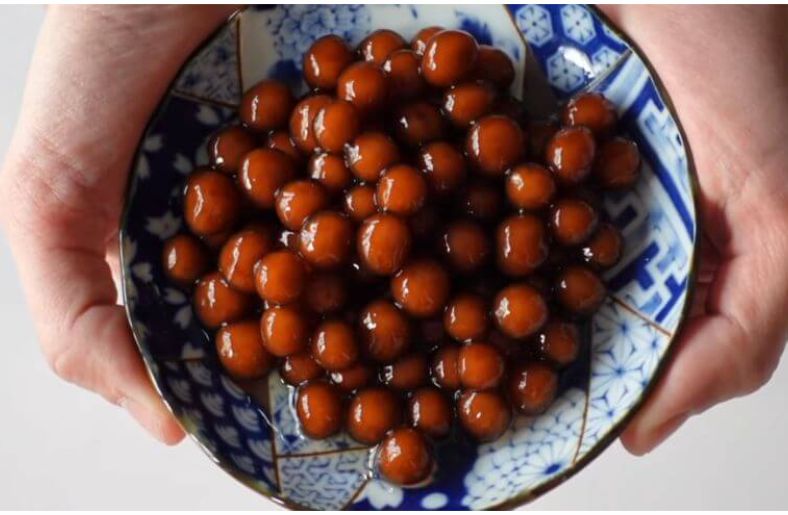
Tapioca pearls are small, round balls made from tapioca starch. They are most popular in bubble tea but are also used in puddings and desserts.
When boiled, these pearls become chewy and translucent. They come in different sizes and colors, often dyed black for visual appeal.
Tapioca pearls are gluten-free and offer quick energy due to their high carbohydrate content.
Though nutritionally limited, their fun texture makes them a staple in many Asian and tropical cuisines.
Proper preparation requires soaking or boiling, and flavored syrups can enhance their taste. They’re a key component in modern and traditional recipes alike. See a comprehensive guide to tapioca pearls.
Tapioca Starch
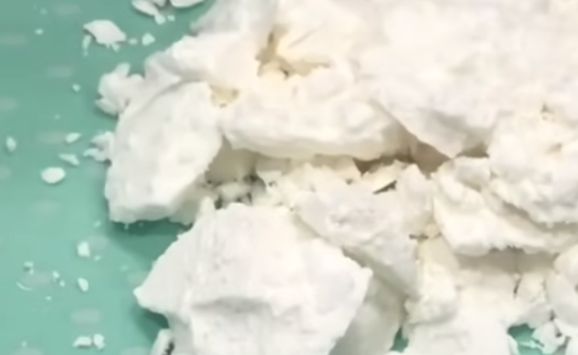
Tapioca starch, also known as tapioca powder, is a fine, white starch extracted from the cassava root.
It’s used as a thickener in soups, sauces, and gravies due to its neutral flavor and ability to create a glossy, smooth finish.
Tapioca starch is prized for being gluten-free, making it a go-to for gluten-free baking.
It improves the texture of baked goods and helps retain moisture. In industrial applications, it’s also used in biodegradable products and pharmaceuticals.
Compared to corn starch, it tolerates freezing and thawing better, preventing separation in frozen foods. It’s a key ingredient in many Asian dishes. See a dedicated post for tapioca starch.
Tapioca Flour

Tapioca flour is often interchangeable with tapioca starch, as both are derived from cassava.
However, in some regions, “flour” refers to a coarser or slightly less refined version. It’s used in gluten-free baking to improve elasticity, texture, and moisture retention.
While it doesn’t rise like wheat flour, it’s great when blended with other flours. Tapioca flour is also useful as a thickening agent in gravies, sauces, and pie fillings.
Its light, powdery consistency and neutral taste make it suitable for both sweet and savory recipes.
It’s essential in paleo and allergen-friendly diets due to its grain-free origin. More on tapioca flour here.
Tapioca Chips
Tapioca chips are crispy snacks made from thinly sliced cassava root that’s deep-fried or baked.
They resemble potato chips but have a crunchier texture and a slightly nutty flavor. Often seasoned with salt, chili, or herbs, they’re popular in many parts of Asia and Africa.
Tapioca chips are gluten-free and provide carbohydrates, though they are usually low in protein and fiber.
While tasty, they are typically high in fat due to the frying process. Homemade or baked versions offer a healthier alternative.
These chips are a delicious way to enjoy cassava and are often served as appetizers or snacks.
Tapioca Sticks
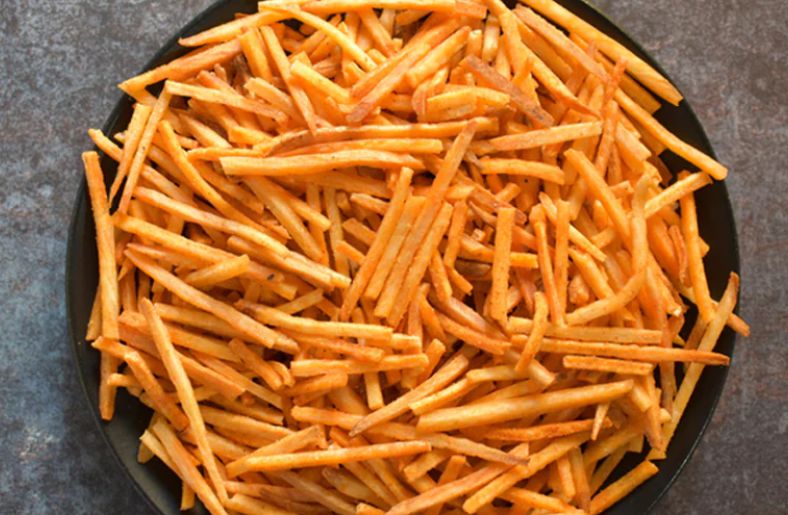
Tapioca sticks are crunchy, elongated snacks made from cassava dough shaped into rods or sticks and then deep-fried or baked.
They are a traditional treat in various cultures and can be seasoned with spices, herbs, or sugar, depending on whether they’re meant to be savory or sweet.
With a golden exterior and firm bite, tapioca sticks are perfect for dipping or enjoying solo.
They’re naturally gluten-free and typically made from a mix of tapioca starch and grated cassava.
While they’re indulgent as fried snacks, they can also be made in healthier forms for guilt-free snacking. See an in-depth guide to tapioca sticks.
Tapioca Syrup
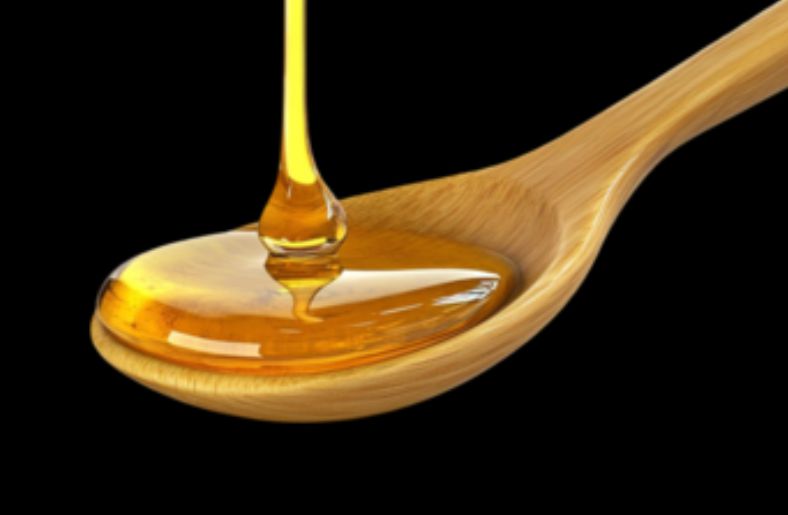
Tapioca syrup is a natural sweetener derived from the enzymatic breakdown of tapioca starch.
It’s commonly used as an alternative to corn syrup in beverages, baked goods, and processed foods.
With a mild, neutral taste and clear appearance, it offers sweetness without overpowering flavors.
Tapioca syrup comes in various dextrose equivalents (DE), affecting sweetness levels and viscosity.
It’s preferred in organic and clean-label products because it’s non-GMO and allergen-free.
While it provides carbohydrates and quick energy, it’s still a form of sugar, so moderation is key.
Its smooth texture and solubility make it versatile in commercial and homemade recipes. Read out in-depth explanation of the cassava syrup here. Read about tapioca syrup here.
Modified Tapioca Starch
Modified tapioca starch is chemically, physically, or enzymatically altered to enhance its functional properties.
Unlike regular starch, it’s designed to withstand high temperatures, acidic environments, or prolonged storage.
It’s used extensively in the food industry for improving texture, stability, and shelf life in products like soups, sauces, frozen meals, and baked goods.
Modified starch can also serve as a fat replacer or emulsifier. It maintains its structure through multiple freeze-thaw cycles and offers consistent performance.
Though it sounds artificial, some modifications are made using natural enzymes. It’s a key ingredient in processed foods requiring reliable texture and viscosity control.
Resistant Tapioca Starch
Resistant tapioca starch is a type of dietary fiber that resists digestion in the small intestine and ferments in the colon, promoting gut health.
Derived from tapioca through special processing, it acts as a prebiotic, feeding beneficial gut bacteria.
It helps improve insulin sensitivity, supports weight management, and increases satiety. Unlike regular tapioca starch, it doesn’t spike blood sugar levels significantly.
It’s used in health-conscious baking and functional foods to boost fiber content without altering taste or texture.
Also known as “type 4 resistant starch” when chemically modified, it’s ideal for keto, diabetic, and gut-health-friendly diets.
Related: Cassava-based Foods
Tapioca vs Other Ingredients
Many people mistakenly equate tapioca with other cassava-based products, leading to confusion between:
Tapioca vs Cassava Flour
Cassava flour is made by peeling, drying, and grinding the whole cassava root, meaning it retains fiber and other nutrients.
In contrast, tapioca is a general name for the extracted starch from cassava, making it a lighter, more refined product. Cassava flour has a denser texture, while tapioca is purely carbohydrate-based.
Tapioca Starch vs Cassava Starch
Both are the same, but cassava starch is a broader term that may include a less refined version, sometimes retaining minor impurities.
Tapioca starch, however, undergoes extra processing to achieve higher purity, ensuring a smoother texture and more consistent performance in thickening and baking applications.
Essentially, tapioca starch is the same as cassava starch but more commonly labeled as “tapioca starch” in commercial packaging. More on tapioca vs cornstarch.
Tapioca Starch vs Tapioca Flour
In many regions, tapioca starch and tapioca flour are used interchangeably, as they are both derived from cassava starch.
However, some manufacturers differentiate them based on processing techniques. In some cases, “tapioca flour” may refer to a slightly coarser or less refined form, while “tapioca starch” is ultra-fine. See more and the difference between tapioca starch and flour.
Tapioca vs Sago Pearls
Though they look similar, sago pearls are made from the starch of the sago palm, whereas tapioca pearls come from cassava starch.
Tapioca pearls are more elastic and commonly used in bubble tea, while sago pearls have a firmer texture and are often used in puddings and desserts.
Understanding these distinctions is essential for making informed decisions when using tapioca-based products in cooking or baking.
Common Uses of Tapioca Around the World
Tapioca is a versatile ingredient found in cuisines across the globe.
While its neutral flavor and unique texture make it a popular thickener, binder, and base for various dishes, each region has its own way of incorporating it into traditional meals.
Tapioca syrup is also used in baking and beverages to quench thirst.

Latin America
In Brazil, tapioca is a key ingredient in pão de queijo, a chewy cheese bread made with tapioca starch.
It is also used in crepes, puddings, and thickened sauces. Other Latin American countries use tapioca in cassava-based porridges and desserts.
Asia
Tapioca is widely used in Asian cuisine, most famously in bubble tea. The chewy pearls in boba drinks are made from tapioca starch.
Additionally, tapioca is used in mochi, soups, and gravies as a thickening agent. In India, it appears in sabudana khichdi, a spiced tapioca pearl dish eaten during fasting periods.
Africa
Many African countries use tapioca as a staple ingredient. It is often prepared as a porridge or mixed into other grains to make a filling meal.
Some regions ferment tapioca to create unique dishes with a tangy flavor. Additionally, tapioca flour is used as an alternative to wheat flour in bread and baked goods.
Western Cuisine
In North America and Europe, tapioca is widely used in gluten-free baking as a replacement for wheat flour. It is a comm
on thickener for pie fillings, sauces, and gravies. Tapioca pearls are also used in puddings and desserts, offering a smooth, creamy texture.
Across cultures, tapioca remains a valuable ingredient, providing texture, structure, and adaptability in a wide range of recipes.
Recommended: Where to Buy Altered Tapioca Starch Online
Commercial Uses of Tapioca
Its unique properties and flexibility have made it a staple in various industries, from food production to pharmaceuticals.
Food Industry
Tapioca’s most well-known commercial application is in the food industry. Its versatility allows it to be used in a wide range of products:
Beverages: Tapioca pearls, or boba, are a key ingredient in bubble tea, a popular drink that originated in Taiwan. These chewy pearls provide a unique texture and have contributed to the global popularity of bubble tea. Tapioca is also used as a thickening agent in the production of beverages.
Desserts: Tapioca is a common ingredient in various desserts, such as tapioca pudding. Its ability to create a creamy, gelatinous texture makes it ideal for puddings, custards, and similar sweet treats.
Baking: Tapioca flour and starch are used in gluten-free baking. Their neutral flavor and binding properties make them essential in creating gluten-free bread, cakes, and pastries.
Processed Foods: Tapioca starch is employed as a thickening agent in sauces, soups, and gravies. It offers stability and clarity, making it a preferred choice over other thickeners, especially in frozen and processed foods.
Pharmaceuticals and Healthcare
In the pharmaceutical industry, tapioca starch is invaluable for its role as a binder and disintegrant in tablet formulations.
Its ability to maintain consistency and dissolve properly in the digestive tract ensures the effective release of active ingredients.
Additionally, tapioca’s hypoallergenic nature makes it suitable for use in medications intended for individuals with dietary sensitivities.
Textiles and Paper Products
Tapioca starch is used in the textile and paper industries as a sizing agent. In textiles, it helps to improve the finish and strength of fabrics.
In paper manufacturing, tapioca starch enhances the paper’s quality by increasing its durability and smoothness.
Industrial Applications
Beyond its use in food and pharmaceuticals, tapioca has applications in various industrial processes.
It is used in adhesives, coatings, and biodegradable plastics due to its natural origin and sustainability. Its role as a natural polymer makes it an eco-friendly alternative to synthetic materials.
Regional Specialties
Tapioca’s versatility is also reflected in regional specialties. For instance, in Brazil, tapioca flour is used to make pão de queijo, a popular cheese bread, and in South America, it’s used to make flatbreads like beiju.
These regional uses highlight tapioca’s adaptability and significance in local cuisines.
Culinary Uses of Tapioca
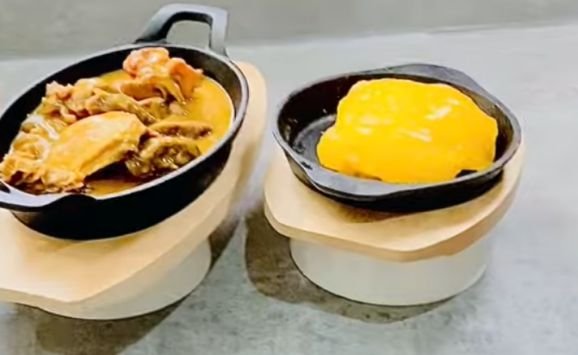
Tapioca has many cooking potentials as you will see below:
Starch Food: The Delta People of Nigeria
Delta people of Nigeria have a cultural food called starch and eat (swallow) with spicy soups like egusi, ogbonor etc.
In Nigeria, the Delta people make tapioca starch with which they eat soups. In Brazil, tapioca flour is used to prepare pancake-like dishes, a traditional delicacy called tapioca.
In India, tapioca pearls, also called boba pearls are used in desserts like kheer. Vietnam and Thailand are not left out, as tapioca pearls are used to make the sweet bubble tea.
The history of tapioca speaks of its versatility and its creative properties in the hands of the people.
Baking and Cooking
Tapioca flour is a good alternative to wheat flour because of its gluten-free status, especially in baking.
It is used to make breads, cakes, and pastries, and also as a thickener for sauces and stews.
Desserts and Sweets
Tapioca pearls or balls are a key ingredient in making desserts like tapioca pudding, as well as bubble tea and kheer.
It is also useful in the sweet, candy, or chewing gum industry, as it is used as a base.
Flatbreads and Tortillas
In places like Brazil, tapioca is used to make traditional popular snacks or flatbreads called tapioca bread and tortillas.
Binding
The starch in tapioca makes it useful as a binding agent in the production of burgers and doughs because it helps to improve the texture.
Health Benefits and Nutritional Profile of Tapioca
While tapioca is primarily valued for its carbohydrate content, it also offers various health benefits beyond basic nutrition.
These advantages make it a beneficial ingredient for individuals with specific dietary and medical needs.
Digestive Health Support
- Easily Digestible: Tapioca is gentle on the stomach, making it ideal for those with digestive issues such as acid reflux, irritable bowel syndrome (IBS), or recovery from illness.
- Low in Anti-Nutrients: Unlike some grains and legumes, tapioca lacks compounds like lectins and phytates that can interfere with digestion and nutrient absorption.
Hypoallergenic Alternative
- Gluten-Free: Tapioca is naturally gluten-free, making it a safe choice for those with celiac disease or gluten sensitivity.
- Grain-Free: As a tuber-based starch, it’s suitable for individuals avoiding grains due to autoimmune conditions or specific dietary preferences (e.g., Paleo and Whole30 diets).
- Dairy-Free & Nut-Free: A safe ingredient for people with dairy or nut allergies, commonly used in alternative milks and vegan recipes.
Supports Energy and Recovery
- Fast-Absorbing Carbohydrates: Tapioca provides a quick energy source, making it beneficial for athletes or individuals needing rapid carbohydrate replenishment.
- Easy on the Stomach During Recovery: Often included in post-illness diets to help restore energy without irritating the digestive system.
May Promote Gut Health
- Resistant Starch Content: Some forms of tapioca contain resistant starch, which feeds beneficial gut bacteria and promotes gut microbiome balance.
- Potential Prebiotic Benefits: Helps improve digestion and overall gut health by supporting the growth of probiotics.
Blood Sugar Management (in Certain Forms)
- Resistant Starch for Glycemic Control: While standard tapioca is high in carbohydrates, resistant tapioca starch may help stabilize blood sugar levels by slowing glucose absorption.
- Lower Glycemic Index When Eaten with Fiber: When combined with fiber-rich ingredients, tapioca’s impact on blood sugar can be moderated.
Weight Management Support
- Satiating and Filling: When prepared with fiber-rich ingredients, tapioca can contribute to a feeling of fullness, preventing overeating.
- Used in Low-Fat Diets: Since it is naturally low in fat, it is often incorporated into weight management and low-fat meal plans.
Skin and Hair Health
- Used in Natural Skincare: Tapioca starch is commonly found in skincare products, helping to absorb excess oil, reduce irritation, and provide a silky texture.
- Non-Irritating Alternative to Talc: Used in baby powders and cosmetics as a natural alternative to talc, reducing the risk of skin sensitivity.
Tapioca’s unique properties make it more than just a carbohydrate source—it supports digestive health, dietary inclusivity, and even skincare applications, proving its versatility beyond nutrition.
Nutritional Profile of Tapioca
Tapioca is a carbohydrate-dense food, providing a significant energy source with minimal protein, fat, and fiber.
It contains about 350 calories per 100 grams, making it a quick source of fuel. The primary nutrient in tapioca is carbohydrates, with around 88 grams per 100 grams, mostly in the form of starch.
However, it has a very low protein content, approximately 0.2 grams, and an almost negligible amount of fat at 0.1 grams.
While it is not a rich source of fiber, tapioca contains around 0.9 grams per 100 grams, which is relatively low compared to other starchy foods.
It provides small amounts of calcium (20 mg), iron (1.6 mg), and potassium (11 mg), but these are not in significant quantities.
It also contains folate (B9) at 6 µg, which supports cell growth and development. Additionally, some types of tapioca contain resistant starch, which can support gut health and provide a slower energy release.
Due to its lack of protein, fiber, and essential vitamins, tapioca is best consumed as part of a well-balanced diet, paired with nutrient-dense foods to ensure adequate nutrition.
Nutritional Composition (Per 100g, Dry Tapioca)
| Nutrient | Amount | Health Impact |
|---|---|---|
| Calories | ~350 kcal | High energy source, ideal for quick fuel. |
| Carbohydrates | ~88g | Primarily starch, providing a rapid energy boost. |
| Protein | ~0.2g | Very low protein content, requiring supplementation from other sources. |
| Fat | ~0.1g | Almost negligible fat content, making it a low-fat food. |
| Fiber | ~0.9g | Minimal fiber, best paired with fiber-rich foods. |
| Calcium | ~20mg | Supports bone health, but in small amounts. |
| Iron | ~1.6mg | Contributes to oxygen transport in the blood, though not a major source. |
| Potassium | ~11mg | Essential for heart function but found in very small amounts. |
| Folate (B9) | ~6µg | Important for cell growth and development. |
| Resistant Starch | Varies | Beneficial for gut health and slow energy release. |
Tapioca is best consumed as part of a balanced diet, paired with protein, fiber, and micronutrient-rich foods for optimal nutrition.
Potential Health Concerns of Tapioca
While tapioca is safe to consume, there are a few potential health concerns to look out for:
- High Glycemic Index: Tapioca has a high glycemic index, and so can cause blood sugar to rise. What this means is that those with diabetes should stay off.
- Added Sugars: Many tapioca-based products, including bobo pearls, have added sugars as they are mostly cooked in sugar syrups. Sugar contributes to weight gain.
- Potential Toxicity: Of course, cassava, the parent root of tapioca, is cyanogenic. This is, of course, problematic when it is not processed properly and the toxins are not removed.
How Tapioca is Made
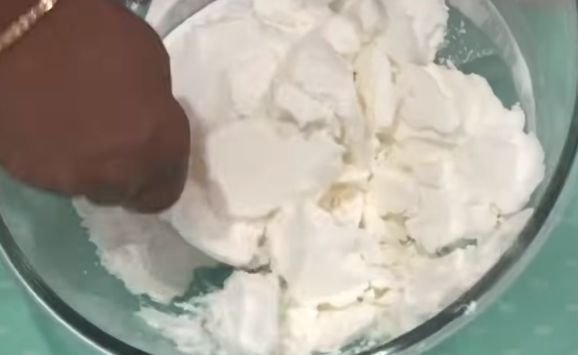
Tapioca is made by refining starch from the cassava root, a tuber grown in tropical regions. After harvesting, the roots are cleaned, peeled, and washed to remove dirt and toxins.
The white flesh is then grated into a pulp to release the starch. This pulp is mixed with water, strained, and the liquid is allowed to settle so the starch can separate and sink.
Once the excess water is drained, the purified starch is dried. From there, it can be processed into different forms like pearls, flour, flakes, or sticks.
Each type serves a specific purpose in cooking and baking. This careful refining process ensures that the final tapioca product is safe to eat and suitable for various recipes.
Frequently Asked Questions
Is tapioca safe to eat every day?
Tapioca is safe in moderation but not ideal daily due to its high carbs and lack of fiber, protein, and essential nutrients.
What are the types of tapioca?
Tapioca comes in various forms, including pearls, starch, flour, flakes, and sticks, each with unique culinary uses such as thickening, baking, or making desserts.
Does tapioca have gluten?
No, tapioca is naturally gluten-free, making it a good choice for people with gluten intolerance or celiac disease.
Can you eat tapioca if you have diabetes?
Tapioca is high in carbohydrates and can spike blood sugar, so people with diabetes should consume it cautiously and in small portions.
Is tapioca safe for people with gluten allergies?
Yes, tapioca is safe for those with gluten allergies since it contains no wheat or related grains and is entirely gluten-free.
References
- Production Of Glucose From Tapioca (Cassava Starch)
- Development of Commercial Tapioca Pearls used in Bubble Tea
- Effect of Tapioca Flour on Physicochemical Properties and Sensory Descriptive Profiles
- Attenuation of glycaemic and insulin responses following tapioca resistant maltodextrin consumption
I am Chimeremeze, a certified cassava farmer, processor and exporter. Also a writer and researcher with deep-rooted experience in processing, consuming, and utilizing locally produced cassava products, including cassava flour, tapioca flour and starch, garri, fufu, fried cassava balls, abacha, cassava chips, and more. Growing up in a community where cassava farming is a way of life, we have mastered its cultivation, processing, and sustainability, making it an essential part of our heritage.
My passion for the cassava plant and its countless benefits drives my research and writing, shedding light on its significance to West Africa and beyond. I also explore the impact of palm oil, another cornerstone of African agriculture, and how it continues to shape economies, diets, and traditions across the continent and the world.

